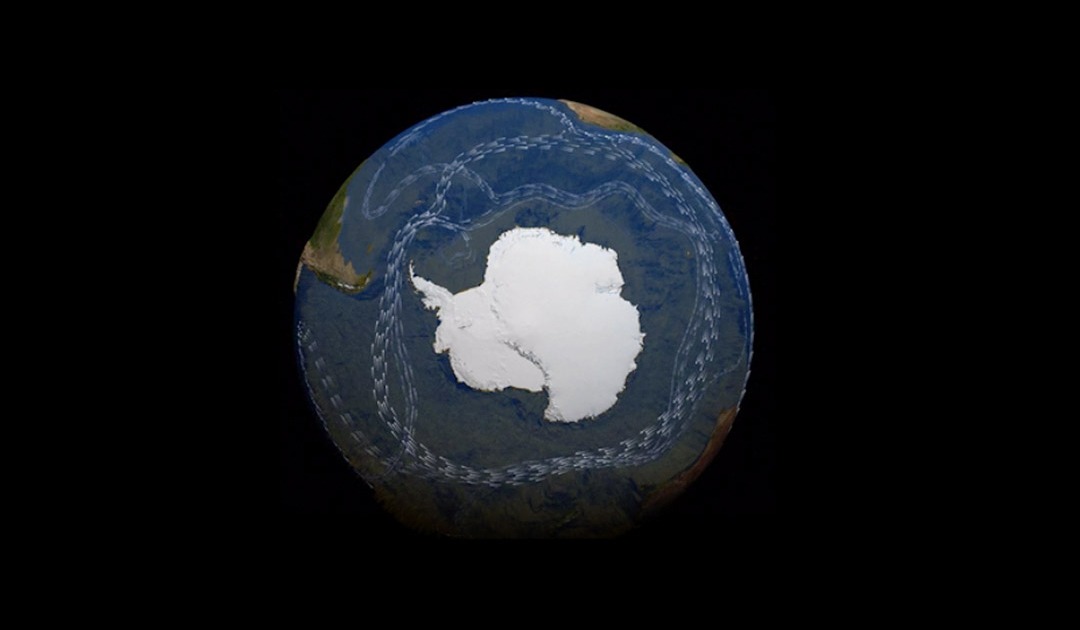
The Antarctic Circumpolar Current is the most powerful ocean current on Earth… and the the only one to circumnavigate the planet. Driven by westerly winds, it transports 100 to 150 million cubic meters of water per second around the Antarctic continent between 40 and 60 degrees south latitude playing a central role in global climate. Scientists have long assumed that it defies global warming and is stable so far. Thanks to new measurements, a team of researchers from the University of California San Diego and other institutes has now been able to show that the circumpolar current has accelerated and narrowed since 1993. Their study was published in the journal Nature Climate Change.
Unlike previous studies, the team led by Jia-Rui Shi, post-doctoral researcher at Woods Hole Oceanographic Institution, Massachusetts, and lead author of the study, was able to use a global network of Argo measuring buoys for their investigations, which have also been drifting in the Antarctic Circumpolar Current (ACC) since 2005. The data obtained from the buoys allowed researchers to determine the velocity of the upper layer of the Southern Ocean for the first time. In addition, the researchers used satellite measurements of sea surface height.

Independent analysis of both data sets showed that the Antarctic Circumpolar Current accelerated significantly between 48° and 58°S, with its velocity increasing most in the Pacific sector and the eastern Indian Ocean. In the Drake Passage between South America and the Antarctic Peninsula, on the other hand, the current did not change much.
Although the prevailing westerly winds in the region have accelerated, these are not responsible for the increase in the speed of the current, according to model calculations. Jia-Rui Shi says that it is rather the warming of the ocean that is causing the significant acceleration of ocean currents observed in recent decades. “This speedup of the ACC, especially its jet centered on the Subantarctic Front, facilitates property exchange, such as of heat or carbon, between ocean basins and creates the opportunity for these properties to increase in subsurface subtropical regions,” Shi said.

The Circumpolar Current forms a barrier between the cold water in the south near the Antarctic continent and the warmer subtropical water in the north. This warmer part of the Southern Ocean has warmed even further due to climate change, leading to an increase in temperature differences between the regions north and south of the Circumpolar Current. The authors see this increased thermal gradient as the most likely cause for the acceleration of the current.
“The ACC is mostly driven by wind, but we show that changes in its speed are surprisingly mostly due to changes in the heat gradient,” said co-author Lynne Talley, an physical oceanographer at the Scripps Institution of Oceanography at the University of California San Diego.
The authors predict that the speed of the Antarctic Circumpolar Current will likely continue to increase as the Southern Ocean continues to warm due to climate change. The specific consequences for marine ecosystems and the regional climate are still unclear.
Julia Hager, PolarJournal





